Lexmark X5650 All-In-One Inkjet Printer Review
Lexmark X5650 All-In-One Inkjet Printer
An all-in-one printer for under £100 sounds pretty good, but how does it perform? Simon finds out.
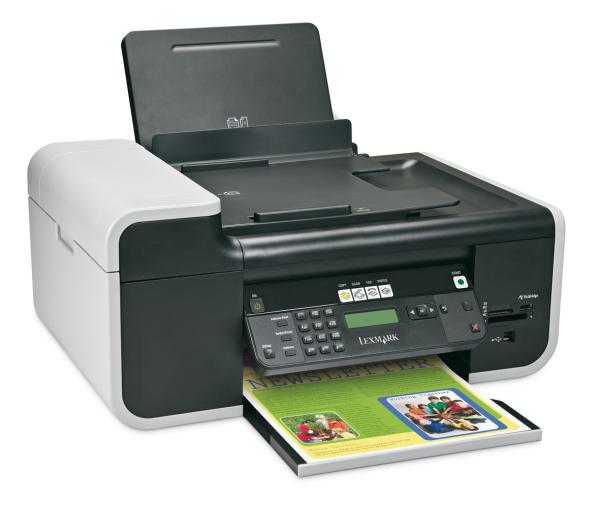
Verdict
Key Specifications
- Review Price: £99.99
Lexmark has recently done the facelift thing on its range of home and school inkjet all-in-ones and the X5650 sits firmly in the middle of this market. At relatively low cost, the machine is designed for printing, scanning, copying, photo print and fax. Even with the new look, though, the print engine is little changed from its predecessors.
Borrowing something from Canon’s curvy black and silver profiles, Lexmark uses mid-grey instead of silver and has designed its new machine with a wraparound effect, which is both functional and easy on the eye.
Lexmark has put a small handle on the right-hand side of the machine’s paper feed tray, to adjust the paper guides without having to move them by hand. We can’t see this as a big advantage and we also wonder about the sprung flap, sitting in front of the tray – as with so many recent Lexmark models. It doesn’t appear to do anything useful. We thought at first these flaps were designed to stop dust falling into the feed mechanisms, but considering the size of the gap between this flap and the paper, it must be pretty ineffective.
The most interesting thing at the front of the X5650 is its two-line status display, which appears to be a white-on-black LED panel, rather than the more normal LCD. Although the size still restricts the display to around 16 characters and longer messages have to scroll to be read, the display is much brighter and higher contrast than any LCD and is easily read under low light.
The control panel is well laid out, with four silver mode buttons at the top, a power button to the left and a copy start button to the right. Below these are a number pad, menu control and specialist buttons for the address book, redial and other functions.
As well as memory card sockets for all the major card types, the PictBridge socket also takes a standard memory stick, by default downloading all jpeg and tif files found to a Lexmark application on your PC. It’s also possible to select and print photos without a computer, using a proof sheet.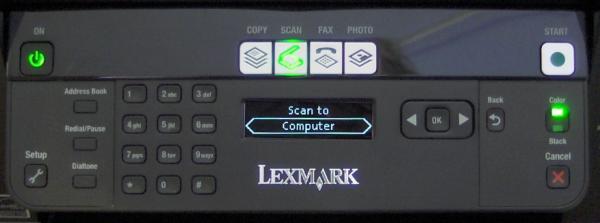
The Contact Image Sensor (CIS) scanner on top scans at up to 600 x 1,200ppi optically and the 25-sheet Auto Document Feed (ADF) is neat and sits flat on top of the scanner. You can scan to a PC or a flash drive plugged directly into the machine.
The X5650 runs on two cartridges, one black and the other tri-colour, but you can replace the black cartridge with a three-colour photo one to improve pastel shades. Once you’ve lifted the scanner section of the device, these two cartridges clip into a head carrier in standard Lexmark fashion and are easy to maintain.
Along with its looks, the supporting software supplied with the X5650 has been revamped. Although the copy of Abbyy Finereader OCR is as before, but other applications have been streamlined so, for instance, the Productivity Studio handles scanning, OCR, e-mailing and fax, as well as more standard photo manipulation. You can make posters and greetings cards using this software, too.
At first sight, Lexmark appears to be getting more realistic with its speed specifications, as it now quotes 13ppm for black print and 3ppm for colour. However, our five-page text print took 1:04 to complete and its 20-page equivalent took 3:02, giving real-world black print speeds of 4.69ppm and 6.59ppm, still nowhere near the published specs.
Part of this is due to extended rasterising times before the first page starts to print. We saw pauses of up to 25 seconds before documents started to print and this may be due to a new default, where multi-page documents are printed in reverse order, so they don’t have to be re-collated.
Our five-page text and colour graphics document took 3:18, a print speed of 0.30ppm – a tenth of Lexmark’s claim. A 15 x 10cm photo print took 2:09 from a PictBridge camera, rising to 2:22 when sent from a PC.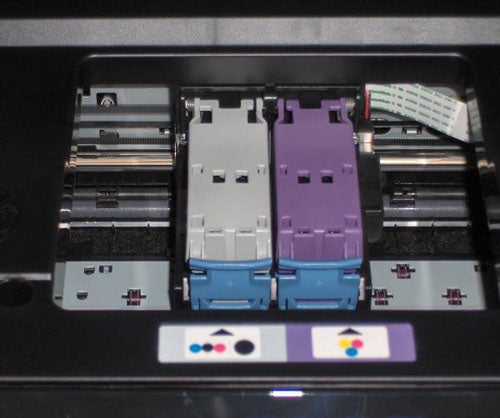
Print quality is still one of the key features of any printer and the results from the X5650 are only fair. Text is black and pretty well-defined, though there is some slight fuzz around the edge of emboldened characters. Business graphics look rather pale, though there is no evidence of banding and registration of black text over colour is good.
Photo prints are still hampered by obvious dither dots in large areas of colour, such as skies, but detail in darker shadowed areas is improved over some previous Lexmark all-in-ones we’ve examined.
The two standard ink cartridges are available in two capacities and in Return Programme and non-Return Programme versions, with a small discount on the Return Programme parts, as long as you undertake to return them to Lexmark. Using the higher capacity, XL cartridges, we calculate page costs of 3.88p for black print and 7.53p for colour.
These costs are higher than from, for example, the Lexmark X6575 we tested recently, around 0.5p per page for black and nearer to a penny per page for colour.
Verdict
Subjectively the X5650 looks better than its predecessors, with a neater profile and a much more readable display. Software has also been improved, but print speeds are, if anything, slower than before and print quality shows no noticeable improvement. If you compare photo output with prints from Canon, Epson or HP printers, you’ll see where Lexmark continues to lag behind.
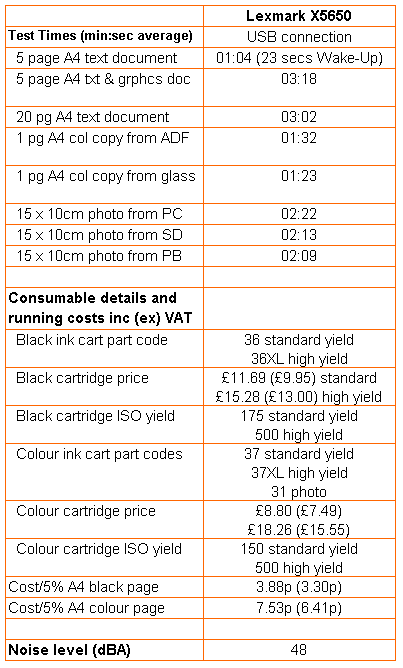
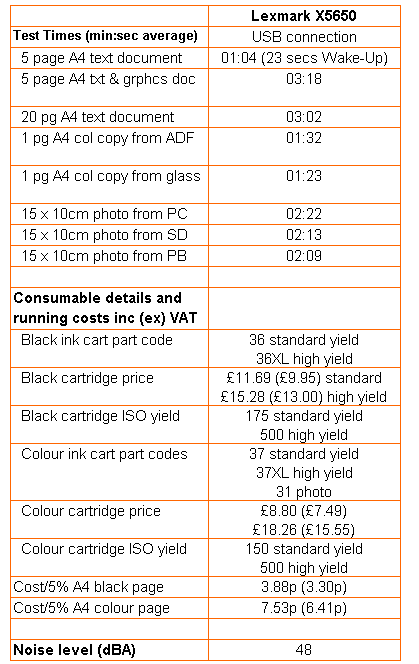
Trusted Score
Score in detail
-
Print Speed 6
-
Features 9
-
Value 8
-
Print Quality 7

